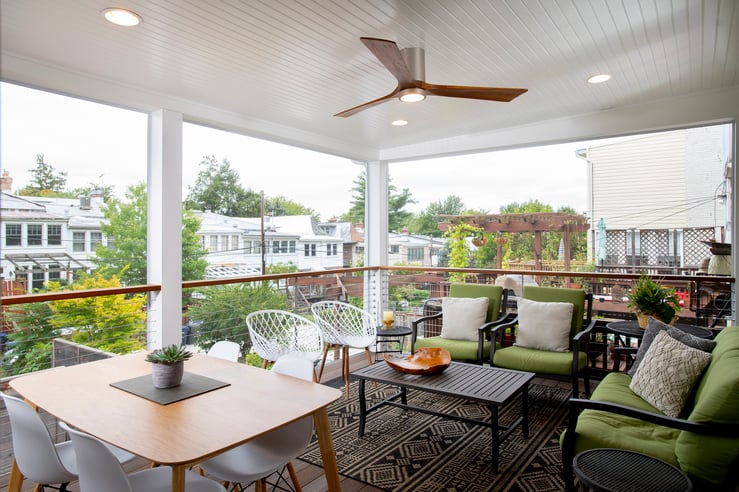Bug Protection for Your Screened-In Porch
If there’s a way into your screen porch, you can bet pests will find it. In a well-built screen porch, the door should be the only potential way a pest can find its way into the room.
In order to effectively protect against bugs, a screen porch must be completely enclosed, but if your porch wasn’t well built from the start, it is often the deck floorboards that were overlooked. Traditional decking has a 1/8” or 1/4” gap between boards, which is more than enough room for mosquitoes or other bugs to crawl through.
Here are the three most effective ways you can build or update a structure to provide more complete protection from creepy-crawlies.
Buh-Bye, Bugs! 3 Tactics to Bugproof Your Screen Porch
1. Add a Deck Screen during Construction
If you are building a new structure using traditional decking, installing a deck screen is simple. Lay down the screen fabric on top of the joists, and then place the deck board on top to hold it in place. The screen is sandwiched between the bottom of the decking board and the top of the joists, providing an effective barrier. Some systems, like the SCREENEZE screening system, include this.
2. Screen It from Underneath after the Fact
If you have an existing structure with deck floorboards, you don’t have the option of placing the screen between the joists and the boards. The installation, therefore, is a little more complicated.
In these cases, you need to add individual screen panels between the joists, which is a more time- and labor-intensive process. In the end, though, this process provides just as much protection against bugs as adding a deck screen during initial construction.
3. Opt for Porch Boards to Protect against Bugs
If you’re building a completely new structure, the ideal option is to avoid using traditional decking altogether. Instead, consider porch boards, which use a tongue-and-groove system. This creates a completely solid surface, meaning there are no gaps for bugs to take advantage of. While screens might eventually rip over time, the porch boards don’t have that potential issue. They provide a sturdier and more lasting barrier against bugs.
Still Having Problems with Pests? Identify the Source
A screen porch should be a safe haven from bugs and insects. If they're still finding their way in, taking the time to determine where they are entering is the best first step. The floor is a great place to check, but you might also find gaps in other areas. Once you’ve identified the issue, an experienced porch and decking professional can help you determine a solution that will keep them out.
You can also try these DIY tips for getting a bug-free outdoor living space.
Have Any Questions about How to Bugproof Your Northern Virginia or Maryland Screen Porch?
Want to know more about how to enjoy bug-free outdoor living? Interested in bug-proofing your existing screen porch? Thinking about adding an outdoor living space from scratch? Whatever you need, feel free to reach out.
We're Design Builders, and we specialize in high-end custom outdoor living spaces in the Northern Virginia and Maryland markets. We're always happy to help, so give us a shout!





